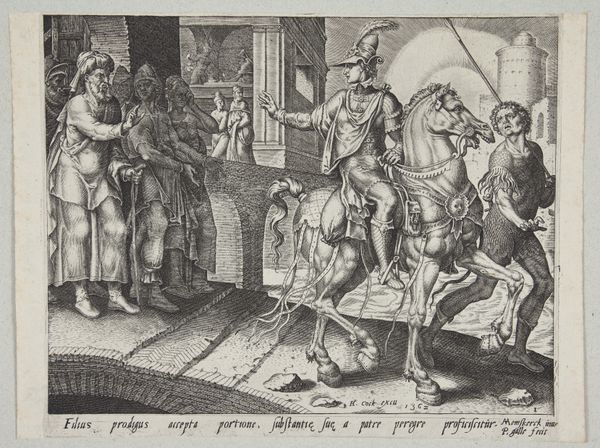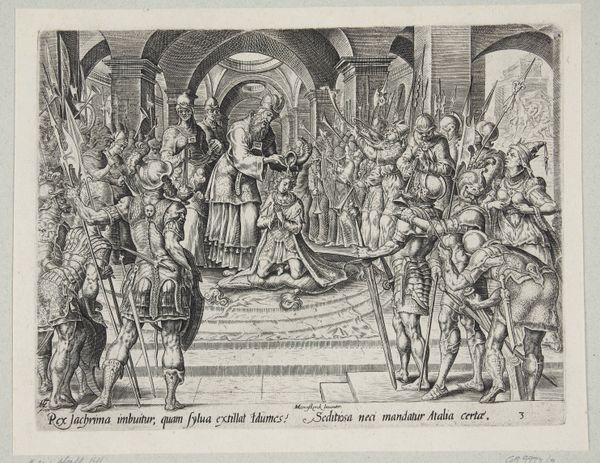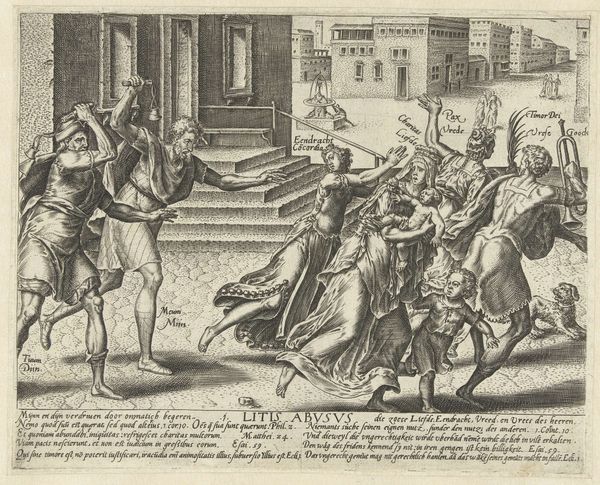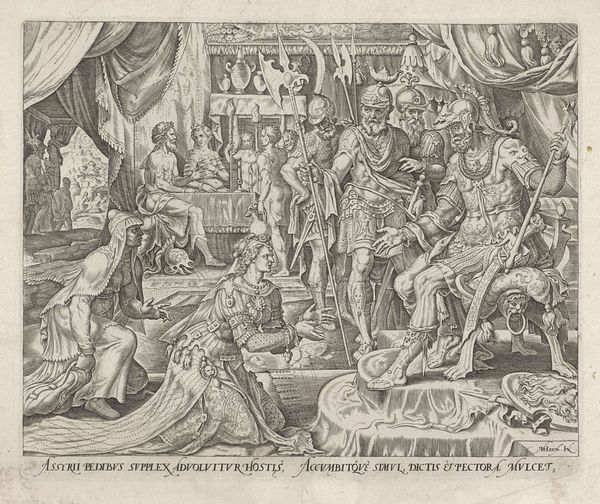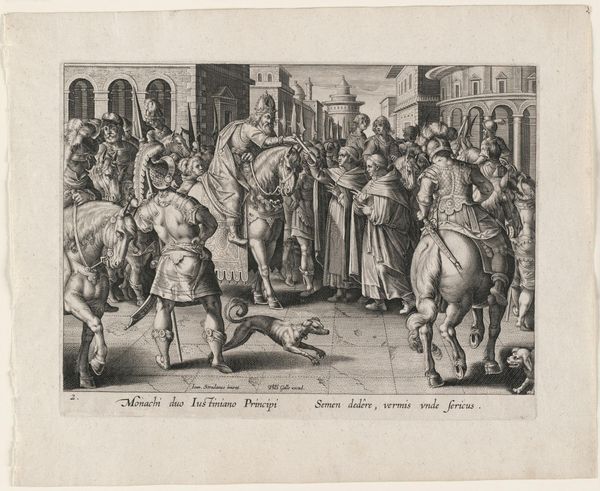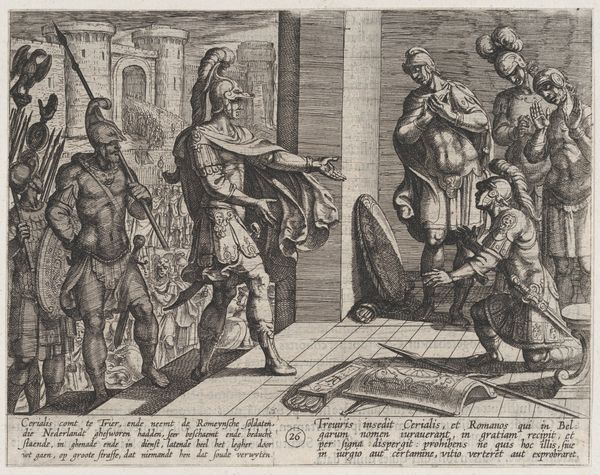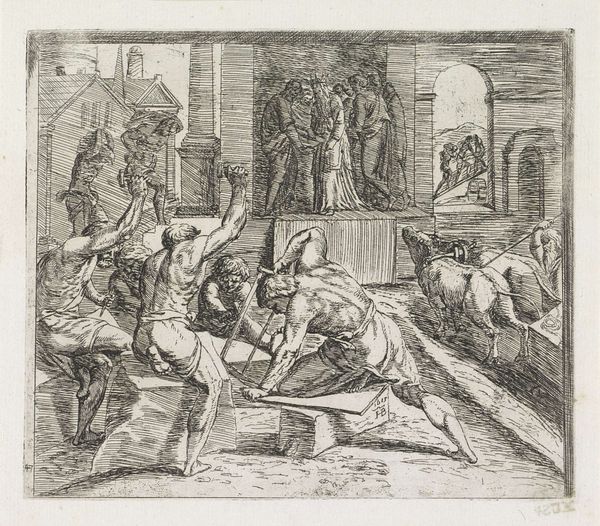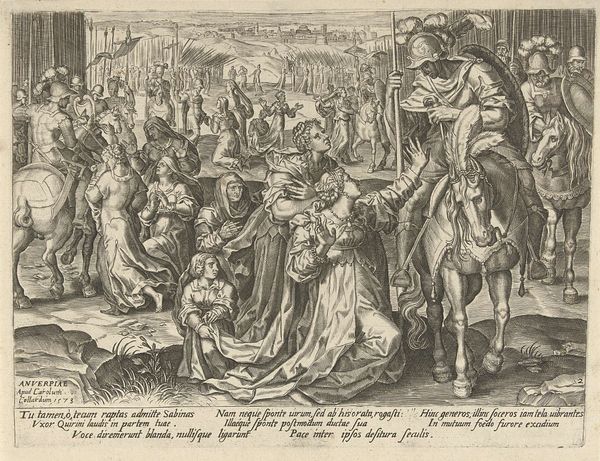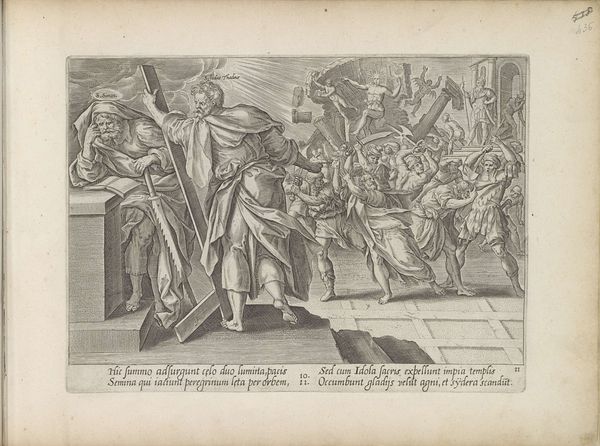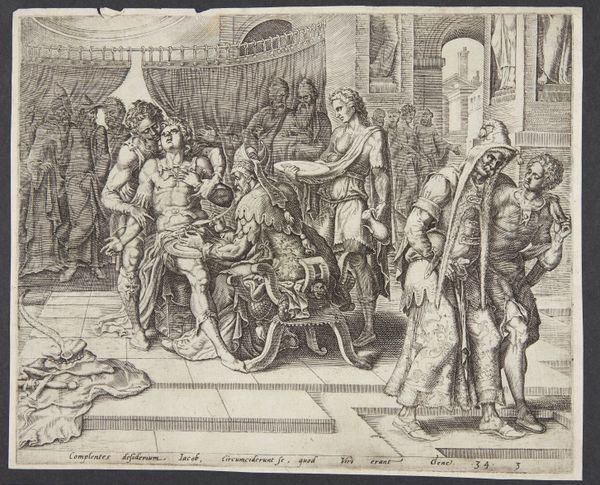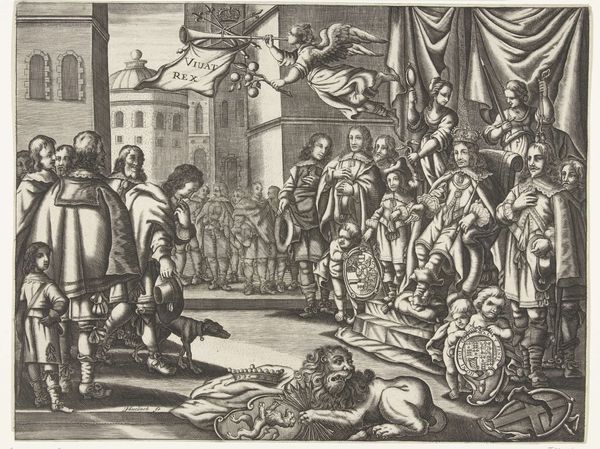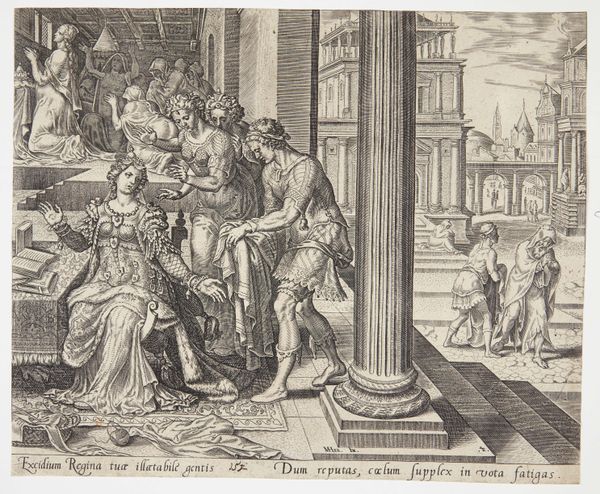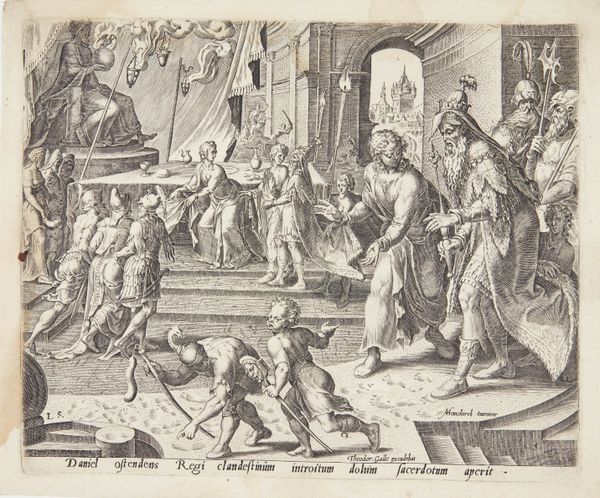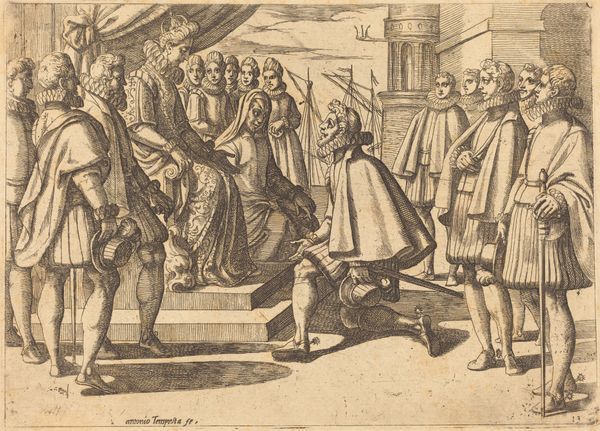
print, engraving
#
narrative-art
# print
#
figuration
#
history-painting
#
italian-renaissance
#
engraving
Dimensions: 206 mm (height) x 274 mm (width) (monteringsmaal), 206 mm (height) x 246 mm (width) (bladmaal)
Curator: This is Philips Galle’s engraving, "The Prodigal Son Leaving His Father’s House," created in 1562. It’s currently held in the collection of the Statens Museum for Kunst. Editor: The piece certainly evokes a strong feeling. Even at this small scale, I can’t help but see this as a story of impending loss and misguided adventure, underscored by the stern paternal figure in contrast to the confident horseman leaving. Curator: Galle situated this scene in a moment rife with social significance. Prints like this, widely distributed, had considerable power in shaping popular morality. The story of the Prodigal Son was used to warn against irresponsible individualism, challenging societal norms and established paternal authority. Editor: I see a deliberate staging, highlighting a young, wealthy man abandoning tradition. I wonder about the other figures, especially the shadowy servant running along by the horse with the lance and sword held aloft behind the rider's head. There’s this sense that the narrative isn’t only a cautionary tale about wasteful spending, but also about privilege. It makes me think about who truly benefits from this 'adventure' and who gets left behind. Curator: The meticulous detail in the engraving itself speaks volumes. The architecture, the garments, the horse's anatomy – all reflect a mastery meant to impress and instruct its viewers on the expected and accepted behavior of men within that class and station of society. Editor: Do you see any conflicting messaging embedded in the work? Considering his intended audience, does the artist also perhaps highlight a youthful rebellion against oppressive social norms and family dynamics, alongside the traditional warning of its ruinous outcome? Curator: That's a fair point. It underscores the fascinating push and pull within religious parables – they are so open to interpretation that one message alone can hardly dominate it. Ultimately, its success would depend on its contextual readings, particularly what the patrons saw fit to draw from it and emphasize. Editor: Indeed. And viewed today, it forces us to reckon with this cyclical, historical narrative, making us confront contemporary reflections of wealth, familial ties, and the potential costs of rejecting them. Curator: Very well said. A perfect illustration of art historical dialogue's ability to contextualize artwork across time.
Comments
No comments
Be the first to comment and join the conversation on the ultimate creative platform.
